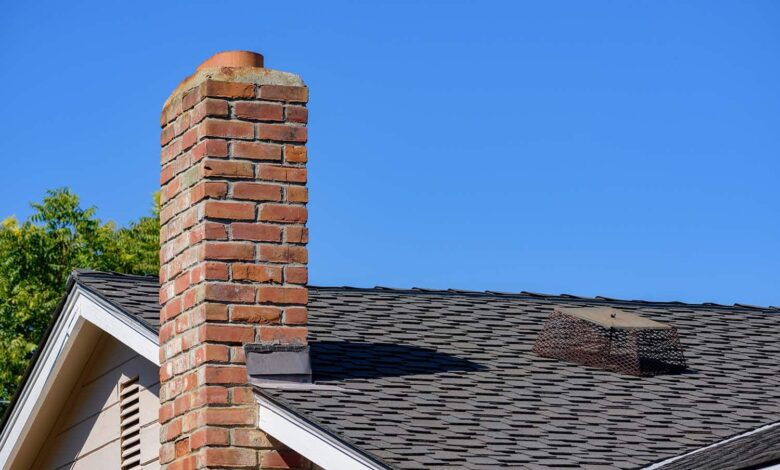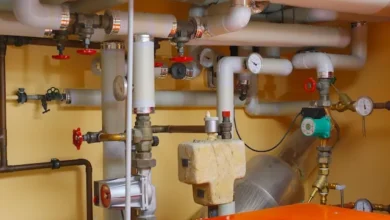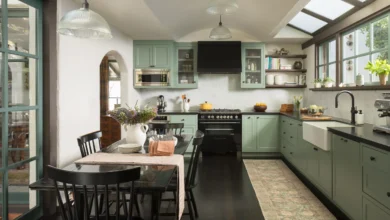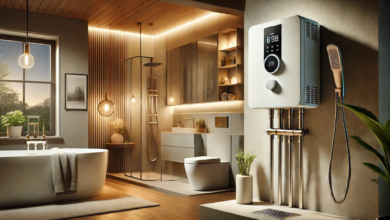How Commercial Roofing Needs Differ from Residential Projects

When thinking about roofs, most people imagine the familiar sloped shingles of residential homes. But commercial roofing is an entirely different landscape. From design and materials to maintenance and compliance, the differences between residential and commercial roofing are vast. Understanding these differences is essential for property owners, facility managers, and anyone involved in construction or renovation projects.
Each type of roofing serves unique purposes and faces distinct challenges, shaped by the function of the building, structural requirements, and environmental exposure. Whether it’s a neighborhood house or a corporate warehouse, the roof overhead must be tailored to meet its specific demands.
Structural Complexity and Design
One of the most noticeable distinctions is the structural design. Residential roofs are often pitched or sloped, offering better runoff for rain and snow. These roofs are also more visible from the ground, which often makes aesthetics a key concern for homeowners.
In contrast, commercial buildings typically feature flat or low-slope roofing systems. These flat surfaces allow for easier installation of HVAC systems, solar panels, and other mechanical equipment. However, the design also requires precise engineering to ensure proper drainage and load distribution, particularly in areas with heavy rainfall or snow.
Because of this complexity, a commercial roofing project demands a more specialized approach than a typical residential one.
Material Considerations
Roofing materials for residential and commercial properties vary significantly, mainly due to the differences in design, scale, and use.
Residential roofing materials often include:
- Asphalt shingles
- Wood shakes
- Metal panels
- Clay or concrete tiles
These materials are chosen for their visual appeal, cost-effectiveness, and ability to handle typical household weather exposure.
Commercial roofing systems, on the other hand, lean heavily toward materials that are durable, energy-efficient, and designed for flat surfaces. Common options include:
- TPO (Thermoplastic Polyolefin)
- EPDM (Ethylene Propylene Diene Monomer)
- PVC (Polyvinyl Chloride)
- Modified bitumen
- Built-up roofing systems (BUR)
Each of these commercial materials is selected not for looks but for performance, particularly resistance to UV exposure, chemicals, foot traffic, and extreme temperature variations.
Installation Process and Labor
The installation time and labor requirements differ substantially between the two types of roofs. Residential roof installation is typically faster, taking just a few days depending on the home’s size and complexity.
Commercial roofing, especially for large buildings, can take weeks or even months. The installation process often involves insulation layers, vapor barriers, membrane application, and other structural components. It’s also common for installations to take place while the building is occupied, requiring phased work and tight scheduling to minimize disruption.
For businesses, working with a qualified roofing company like Homey Roofing and Restoration ensures that installations or replacements are executed efficiently and in compliance with all relevant regulations.
Maintenance Demands
Maintenance plays a critical role in the lifespan of any roof, but the expectations and scope vary dramatically between commercial and residential properties.
A residential roof might require periodic inspections, gutter cleaning, and occasional shingle replacement. Homeowners can usually handle minor repairs on their own or with minimal professional help.
In contrast, commercial roofs require regular, professional inspections and maintenance due to their size and complexity. Factors like rooftop equipment, frequent foot traffic, and flat design make them more vulnerable to leaks and drainage issues. A neglected commercial roof can quickly escalate into costly structural damage or even business interruptions.
Maintenance contracts with experienced commercial roofing providers are common to ensure longevity and performance.
Regulatory and Safety Standards
Another key difference lies in regulatory compliance and safety. Residential roofing projects typically adhere to local building codes and safety measures, which are generally less strict compared to commercial projects.
Commercial roofing projects, however, must follow a wide range of regulations, including OSHA standards, fire codes, wind uplift resistance, and energy efficiency certifications. The scope of inspection is broader, and non-compliance can lead to significant fines, liability issues, or insurance complications.
This regulatory complexity is one reason why working with knowledgeable roofing contractors is vital for commercial properties.
Budget and Lifespan Considerations
Cost is always a deciding factor in roofing projects, and commercial installations usually carry higher price tags. This is due to the larger surface area, longer installation timelines, more complex materials, and specialized labor involved.
However, commercial roofs are also built with longevity in mind. While residential asphalt shingles may last 20 to 30 years, a properly installed commercial roof can last 30 to 50 years or more, especially when maintained regularly.
Budgeting for commercial roofing often includes long-term maintenance plans and periodic upgrades, rather than just a one-time installation.
Energy Efficiency and Environmental Factors
Energy efficiency is an emerging priority for both residential and commercial properties, but the strategies differ. Homeowners may focus on attic insulation and energy-efficient shingles. Meanwhile, commercial buildings often require roofing systems that meet stringent energy codes and contribute to sustainable building certifications like LEED.
Cool roofs, green roofing systems, and reflective membranes are common in commercial applications. These systems reduce heat absorption, lower cooling costs, and improve overall building performance.
Emergency Repair Needs
When roofing problems arise, response times and repair needs are different. Residential issues like a leaky shingle can usually be patched quickly. Commercial properties, however, often require urgent attention from trained crews, especially when a damaged roof jeopardizes operations, inventory, or safety.
Access to emergency repair services and contingency planning are essential components of any commercial roofing strategy.
Tailoring Solutions to Purpose
At the end of the day, roofing is never one-size-fits-all. A commercial office park has very different needs than a single-family home. It’s about understanding the purpose of the building, the expectations of the occupants, and the environmental demands placed on the structure.
That’s where the right contractor comes in. A company that understands both the technical and practical aspects of roof installation, maintenance, and repair can help building owners make informed, cost-effective decisions that stand the test of time.
Working with experts like Homey Roofing and Restoration allows property owners to explore suitable materials, navigate compliance requirements, and create maintenance schedules that protect their investment for decades to come.
Final Thoughts
While residential and commercial roofing share the fundamental goal of protecting a structure, they differ dramatically in nearly every other way. From design and materials to regulations and cost, each roofing type serves its unique environment and purpose.
For homeowners and property managers alike, understanding these distinctions is critical when planning roofing projects. Knowledge is power—and in roofing, it can mean the difference between decades of reliable performance and a costly, premature replacement.




